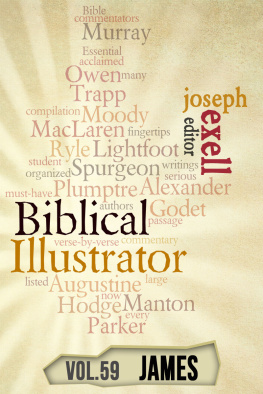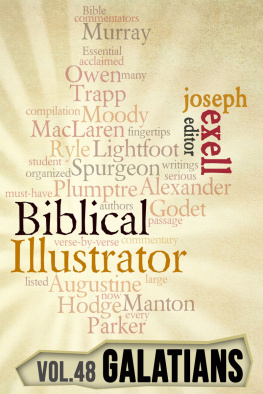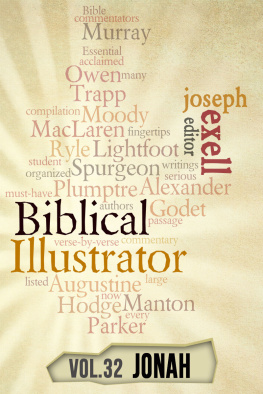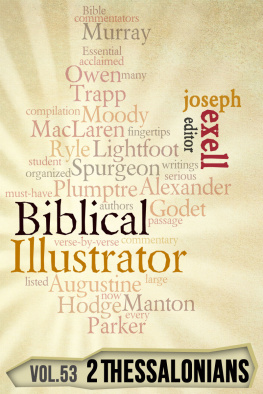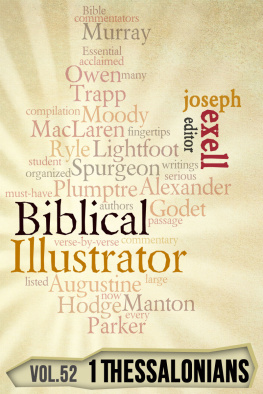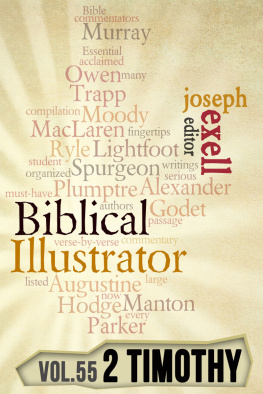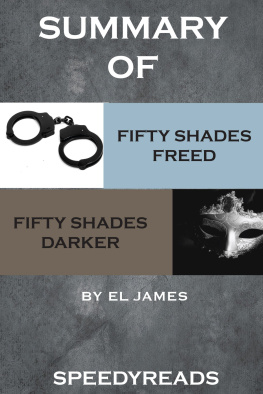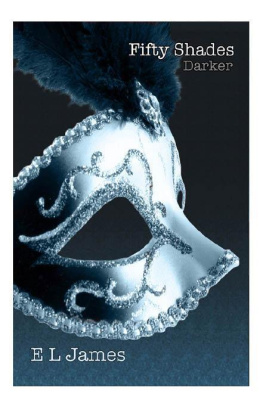JAMES
INTRODUCTION
WHO WAS ST. JAMES?
Three persons bearing this name (Jacobus) occupied prominent positions in the early Church. One, the son of Zebedee, was martyred by Herod (Acts 12:2). The second is described in the four lists of the apostles as the son of Alpheus. He was one of the original twelve, and never during the time covered by the New Testament narrative is said to have been an unbeliever. The third is the James, the Lords brother, of Galatians 1:19, who was certainly the Bishop or President of the Church of Jerusalem, to whom St. Paul, on his return from his third journey, went in; and all the elders, it is said, were present. That he was the Superintendent or Bishop of the Church at Jerusalem is also evident from this, that he presided at the meeting or council in which it was ruled that the Gentiles should not be called upon to submit to the Jewish law. Now the question arises, Did these two names James the son of Alpheus, and James the brother of the Lord belong to the same person? This view is attended with the difficulty that the James who, with three others Joses, Simon, and Judas is called by the Nazarenes the brethren of Jesus, was certainly not a believer when Jesus taught in the synagogue at Nazareth some time after the calling of the apostles, and when the people scornfully asked (Matthew 13:55), and later on when it is said (John 7:5). But if he was not the son of Alpheus, of whom was he the son? We cannot tell with certainty the name of his father, but we can tell with the utmost certainty the name of his mother that she was a certain Mary who stood by the Cross, and is four times said to be the mother of James. We will begin our examination with the first notice (Matthew 13:55). The second notice is in the same Gospel (Matthew 27:55, 56). Taking these passages together, as being in the same book and from the same hand, it is impossible to avoid the conclusion that the James and Jones were the same as those mentioned in Matthew 13:55, and that this Mary was their mother. The notices in St. Mark are the same, and lead to the same conclusion, only that in Mark 15:40 we read, Mary, the mother of James the Less and of Jones, and (Mark 16:1) Mary, the mother of James. In St. Luke (Luke 24:10) we read, Mary, the mother of James, mother being supplied. Now this Mary is called in John 19:25, the (wife) of Clopas. If the Clopas is the same as Alpheus, then the Apostle St. James was one of the original twelve, and the inferences we have drawn from the fact that the Nazarenes claimed him as on their side, rather than on the side of Jesus, falls to the ground, and must be otherwise accounted for. St. James must have been either the Apostle James, the son of Alpheus, or the son of a Mary, in all probability the sister of the Virgin, who stood by the Cross, but the name of whose husband has not been preserved. (M. F. Sadler, M. A.)
The questions, whether St. James the Less was an apostle, and what is the precise relationship which is expressed by his appellation, the Lords brother, exercised the ingenuity of many learned writers in the earlier ages of the Church, who possessed ancient documentary aids for the solution of them which are not now extant. It would therefore he presumptuous to dogmatise on these two points. Rather we may reasonably believe that a providential purpose may be subserved even by the uncertainty which surrounds them. The Holy Spirit, if He had been so pleased, might have made them perfectly clear by a few additional words in Holy Scripture; but He has not done so. He foreknew the doubts which would arise in the Church in regard to these questions. There is therefore a moral in His reserve, a meaning in His silence. And what is that? Perhaps by such difficulties as these He designed to make us more thankful for those essential verities of saving doctrine which are fully revealed to us in Holy Writ. There seems also to be a special lesson to be learnt from the particular questions which have now passed under review. The Holy Spirit has thrown a veil over the personal history of the Blessed Virgin. He has not clearly disclosed to us the precise nature of the relationship which is indicated in Holy Scripture by His own words, the Lords brethren, the Lords sisters. And why was this? Might it not be in order to wean our hearts from laying too much stress on carnal relationships, even to Christ Himself? Might it not be for the purpose of reminding us of the high and holy nature of our own privileges as brethren and sisters of Christ, by virtue of our own incorporation in His mystical body, and our relation to our Heavenly Father by filial adoption in His ever-blessed Son? Might it not be for the sake of inculcating more forcibly that holy and joyful truth which Christ Himself vouchsafed to declare to us when He said (Matthew 12:48-50; Luke 11:27, 28)? This divine truth that brotherhood to Christ consists in obedience to His heavenly Father is the sum and substance of this Epistle written by St. James, the Lords brother. (Bp. Chris. Wordsworth.)
TO WHOM WAS THE EPISTLE ADDRESSED?
It was to the Jews of the Dispersion, to the Hellenists, that St. James addressed this Epistle; to those who were nonresident in the land of Judaea, as distinct from those who were resident there; to Grecising Jews as distinct from Hebrews. They were at this time a mixed assembly in a religious point of view, as a large infusion of Christianity had spread among them through the information brought to the various centres of their sojournings by the visitors who came up to Jerusalem at that memorable Pentecost, when the Holy Spirit was poured out upon the apostles, and from other sources. St. James makes reference to these believers as the poor, humble, tempted, beloved brethren. The sharp line of distinction between the synagogue and the Church had not yet been drawn; the Christian Jews at Jerusalem attended the services at the temple, and those of the Dispersion worshipped in the synagogues, holding, it is most probable, a gathering or after-meeting of their own body at a different hour. To this custom, it is likely, Hebrews 10:25 refers. Thus our Epistle, when read, would be read in the synagogue where all met together, and thus be heard of all, both Jewish non-Christians and Jewish Christians: the former were to appropriate the rebukes, the latter the consolations of the Epistle. With this view all the parts of the Epistle are consistent with each other, and the extremes of praise and invective, in themselves so irreconcilable, each receive their own allotment and proper direction. The general tone of the letter is decidedly one of severe reproof, at times rising to prophetic denunciation, relieved by tender utterances of love and whispers of consolation: the former adapted to the majority of the attendants at the synagogue, who were non-Christians, and the latter to the minority, who had in different degrees of light received the doctrine that Jesus of Nazareth was the Messiah. (F. T. Bassett, M.A.)
THE PLACE AND TIME OF WRITING.
As to the place of composition there is not the shadow of a doubt. Even if there were not an unbroken consent of all historical, traditional, and legendary notices as to the continued residence of the Bishop of Jerusalem in the city which was, in modern language, his see, the local colouring of the Epistle would indicate with sufficient clearness where the writer lived. He speaks, as the prophets of Israel had done, of the early and the latter rain (James 5:7); the hot blast of the Simeon (James 1:11), the brackish springs of the hills of Judah and Benjamin (James 3:11), the figs, the olives, and the vines with which those hills were clothed (James 3:12) all these form part of the surroundings of the writer. Storms and tempests, such as might have been seen on the sea of Galilee, or in visits to Caesarea or Joppa, and the power of man to guide the great ships safely through them, have at some time or other been familiar to him (James 3:4). (
Next page
